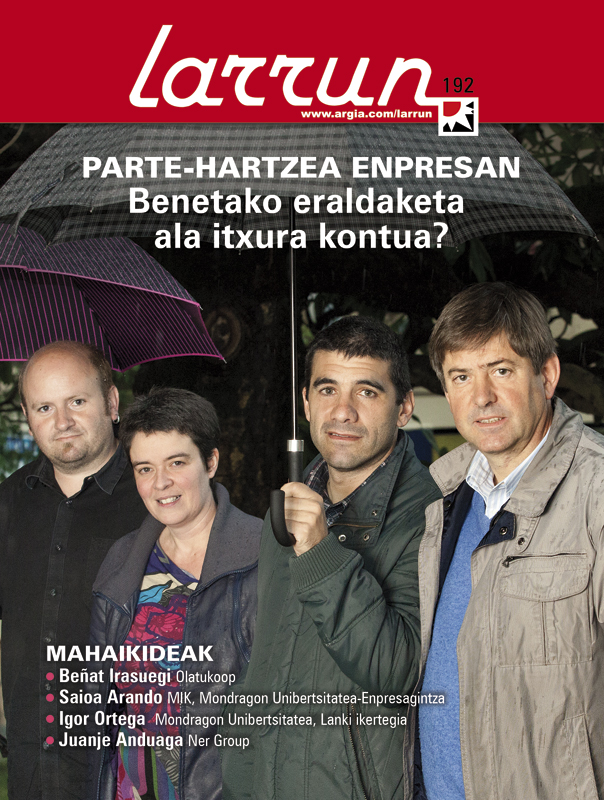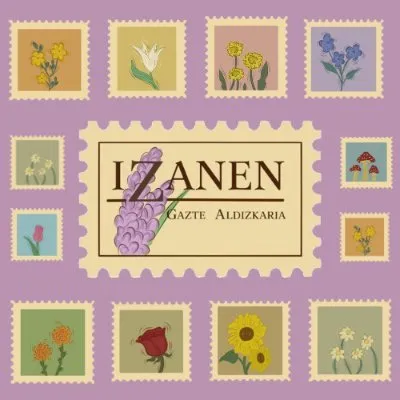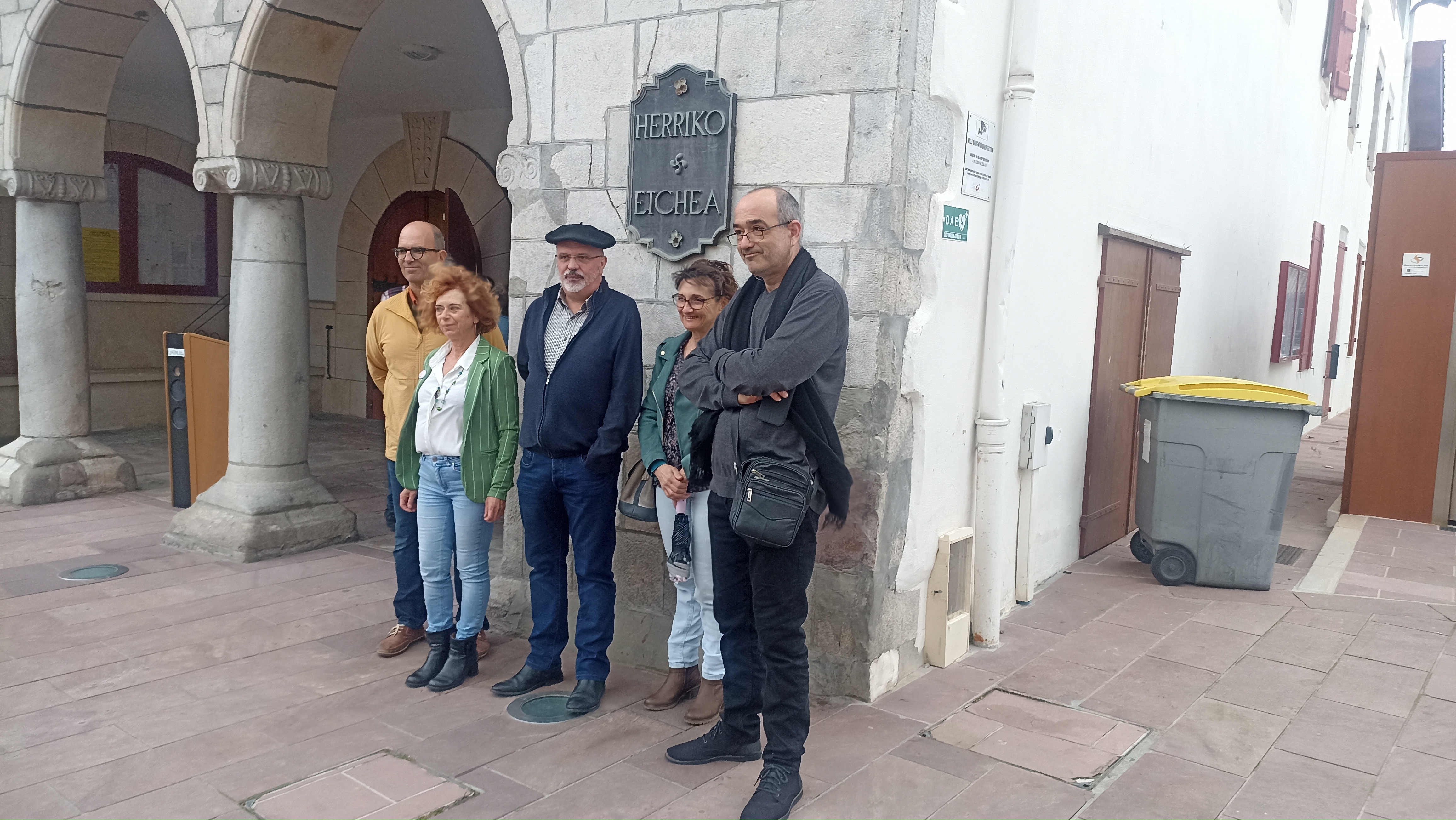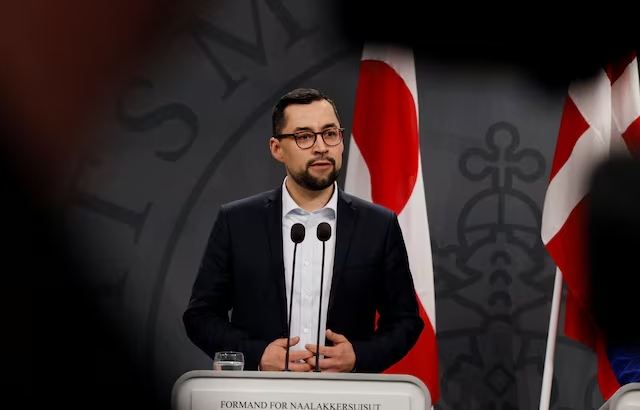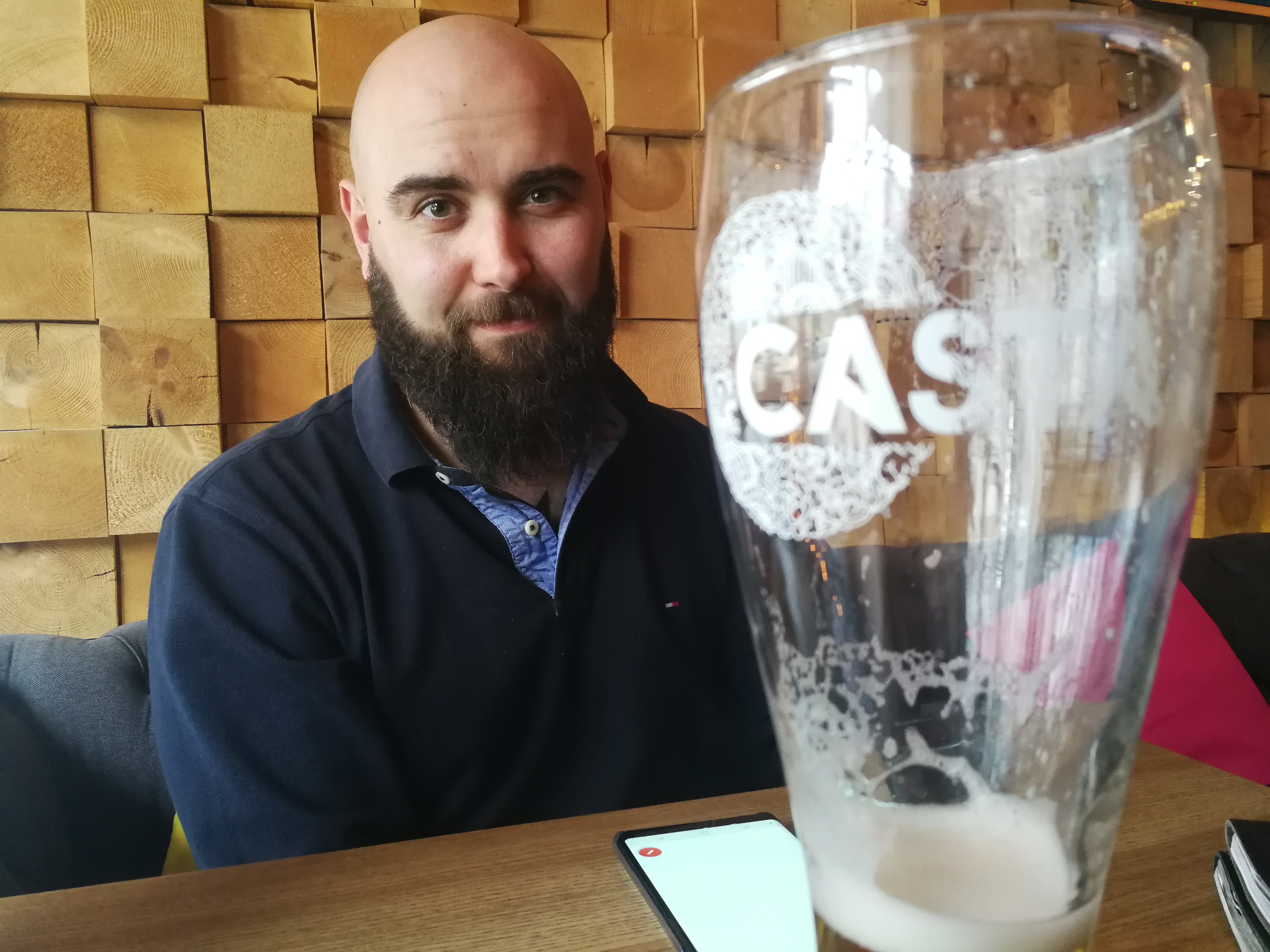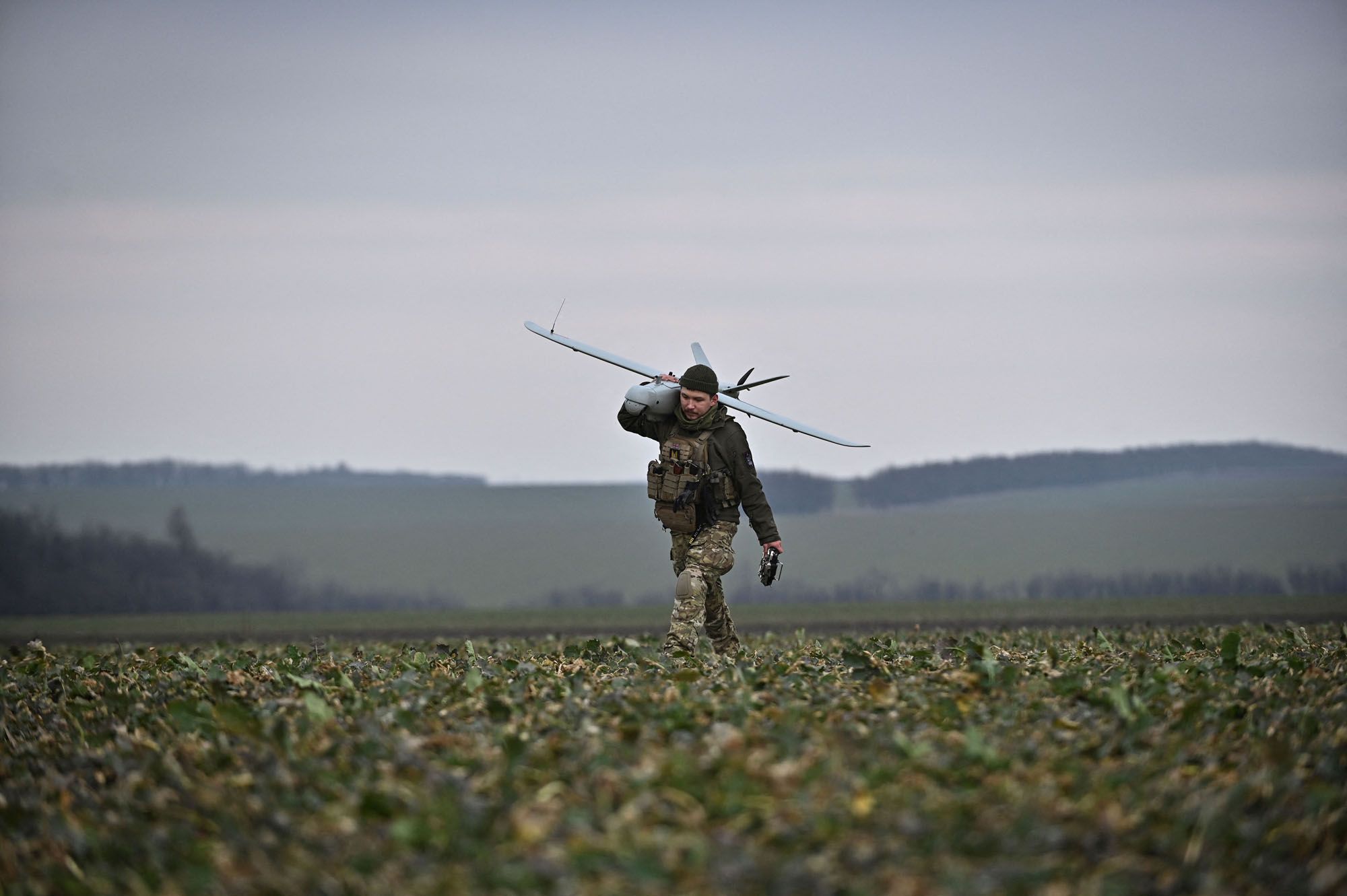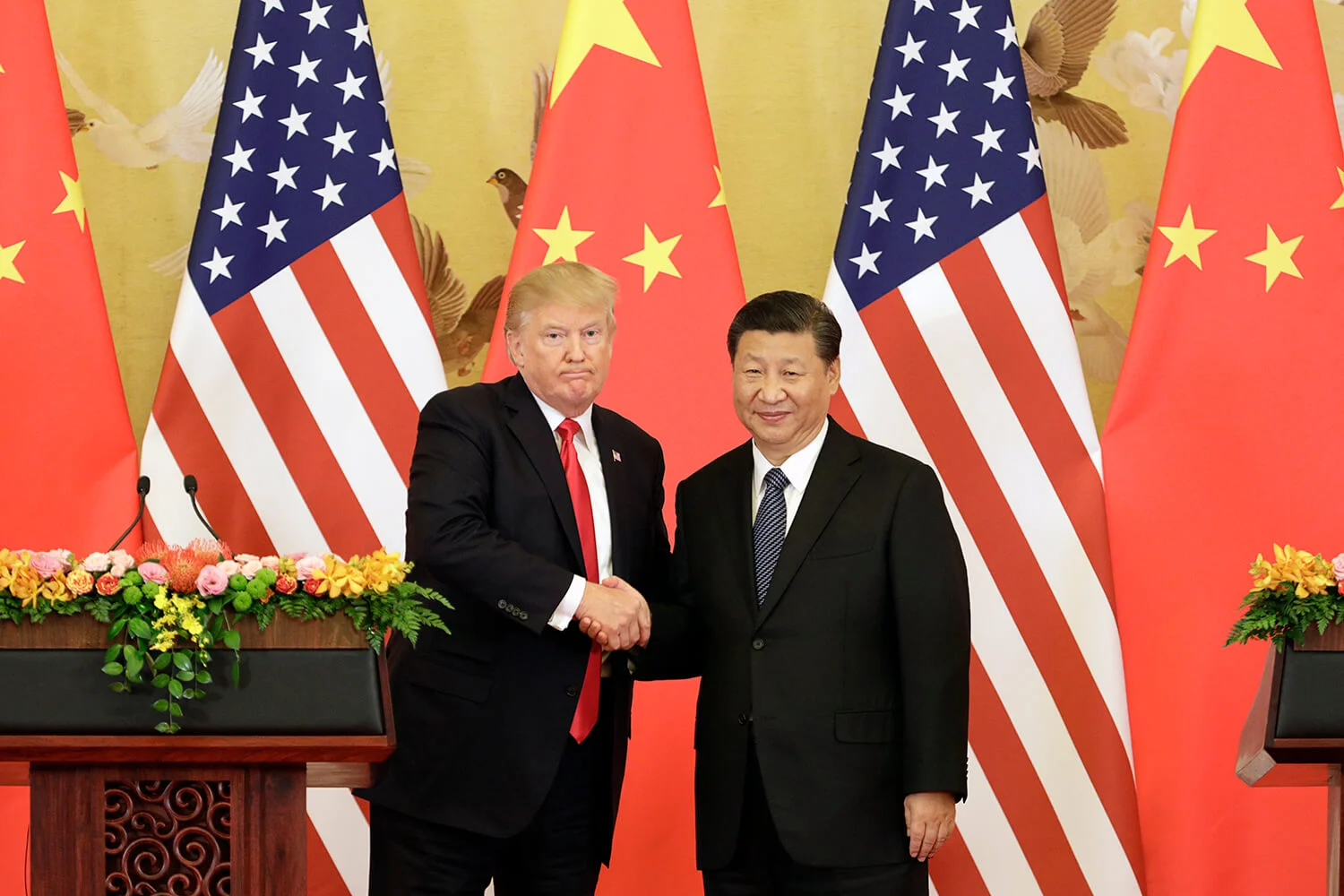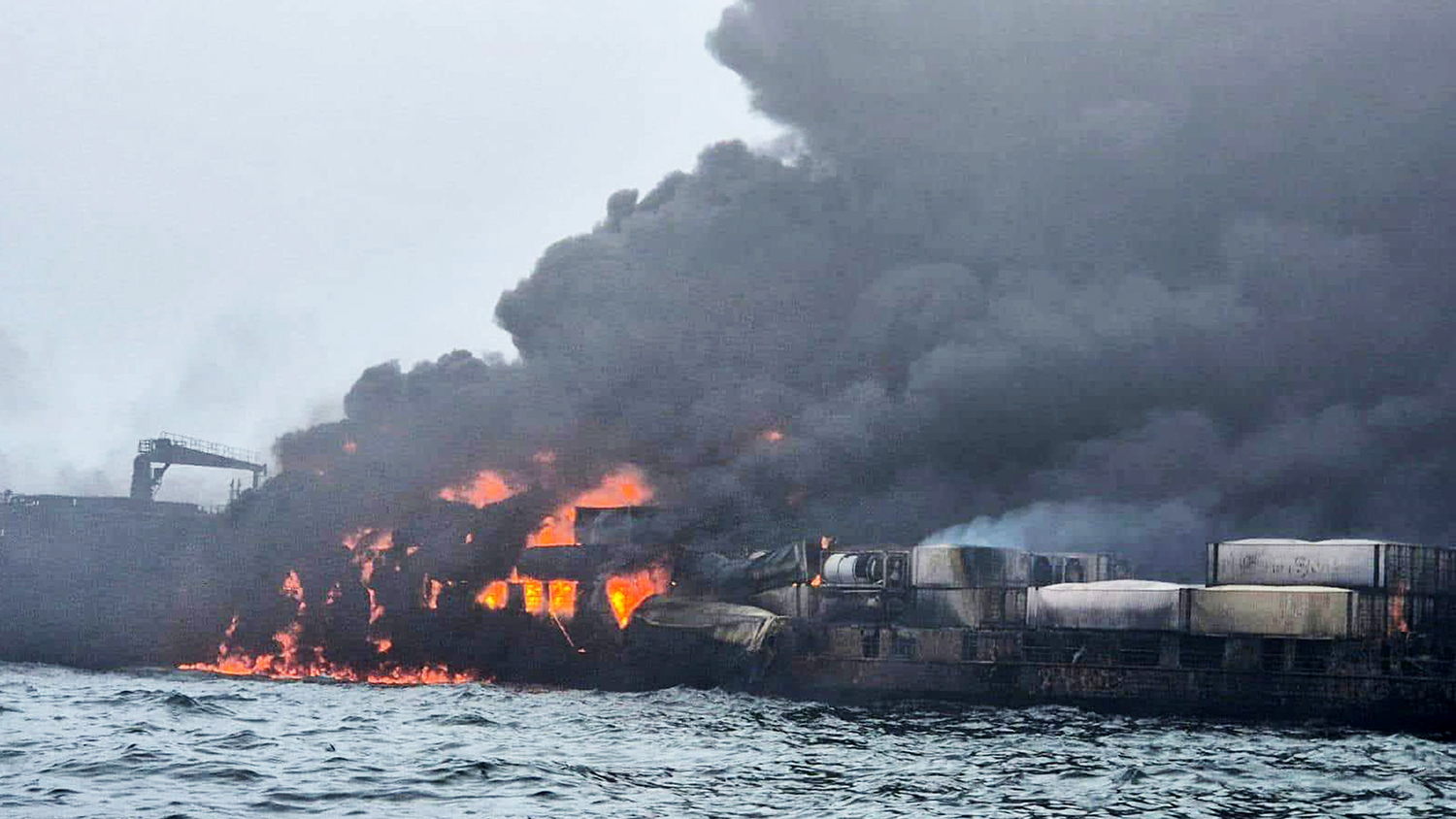Is the objective competitiveness or democratisation?
- The participation will be heard by all the agents of the company: from the employer to the worker, from the politician to the economic experts. At the round table we have put together three projects which are an example of real participation: The Mondragon Group, the Ner and Olatukoop Group, which has just been born within the transformative social economy. These are companies of very different dimensions, property is in the hands of the workers and in the hands of the entrepreneurs, some are newly created and others have accumulated growth and crisis over the years... From their experience, they have analyzed the keys to real participation and the possibilities it opens to make profound transformations in relationships, in the company and in the economy. They have also helped us to interpret the general fashion discourse, placing us in the context and analyzing the background messages.
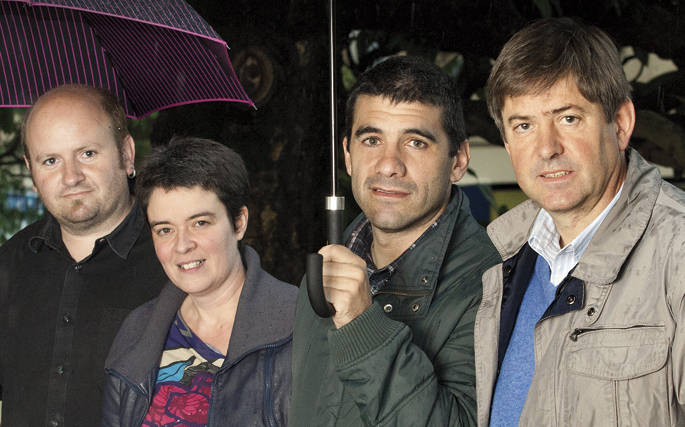
We have often begun to hear the need to promote participation in the company. What is the fundamental objective of this discourse and what should participation be encouraged for?
Saioa Arando: If we believe that a different business model is possible, where decisions can be made more horizontally, participation must be the objective. The cooperative model saw it from the very beginning. But participation can also be a tool to bring benefits to workers (increasing motivation, reducing absenteeism, the worker feels part of the company) to bring benefits to organizations (all of which have a direct impact on productivity) and to bring benefits to society, both socially and economically: If companies are more productive, they will generate greater economic development in the environment and if workers learn to develop within the company in a certain way, they will also do so much more participatively in the opening and integration of the company’s doors.
Juanje Anduaga: There is a lot of talk about participation, but in many entities there is no real participation. In Ner's case, participation is integrated into the relationship style. The word ner means that in Spanish, (new style of relationships) a new style of relationships. When we say participation we are talking about the participation of all workers, 100%.
Beñat Irasuegi: The discourse of participation in the company starts to be fashionable. Talking about participation is very nice, it's in everyone's interest... and that's what concerns us who are close to Olatukoop: everything? How is it possible that we are all interested in the idea of participation when we have very different objectives? The democratization of economic activity must be the objective of real participation. I suspect that, many times, behind the discourse of participation there are other interests. Is that the fundamental debate, we want real participation, which extends to all areas of economic activity, or are we looking for something aesthetic? A participation that blurs existing errors in today’s business models?
Igor Ortega: What are the reasons for the current participation issue? There are three main areas: on the one hand, society itself demands participation, not only in the company, but also in the political and social spheres. Effectiveness is a second reason why the models organised around participation are also more efficient from the point of view of competitiveness, productivity. We have already assumed that these hierarchical classical Taylorist-Fordist-Mechanistic structures or companies are not effective in the logic in which the current globalized world moves and are losing competitiveness. On the contrary, organisations that activate people’s skills, knowledge and creativity gain a better position in competitiveness by gaining added value. The third key is the ethical dimension. As the programme mentioned, it is about knowing to what extent participation is more instrumental to be more effective, or to what extent it is objective in itself. In society there is a demand to also integrate the ethical dimension in the world of business. It is no coincidence that the social solidarity economy has a current momentum. The company is asked to be the centrepiece, to have economic resources and institutions at the service of the person's development and not the other way around... The question is to what extent it is possible to combine the instrumental dimension and ethics. I believe that both are necessary. Mondragon Unibertsitatea has launched an investigation and is demonstrating that there is a great connection between increased productivity and those models that promote the well-being, participation and involvement of the person.
S. Arando: The business model we have at the moment has been the one that has taken the step. This is a moment of change. This change must be a real cultural transformation. It is not a proposal to put patches on a day-to-day basis and move on. A cultural transformation in which people have to change to get started. But not only people, but also organization, culturally. And on a day-to-day basis, both operational and strategic, you have to change the way you do things. In this cultural transformation, participation is the first idea that should be put on the table. In today’s society, a non-participation business model has no place.
How is participation in the company integrated?
J. J. Swan: Why do the entities that claim to have a participative model continue with the traditional structure? It is clear to us that if this structure does not change completely, with a radical change, that model will not be fully participatory. We use the word style more than the model.
Ner’s experience in introducing change in companies. Cooperatives of the ner group, as well as neighbouring anonymous companies (SA), follow this participative style. When a company comes to us to say “I want to start with you”, the first thing we do is to start a process in which all the workers participate. At the end of this process there is a general assembly in which at least 85% of workers must agree to the start of the transformation. The first step we take next is the elimination of that traditional vertical structure. And we form self-managed teams. Therefore, in our organization the managers, intermediate or managers disappear, leaving a totally horizontal and transversal structure, integrated by multidisciplinary self-managed teams.
I. Ortega: Ner's is a radical model and he has very good things. The chip change is made from the beginning and if there is a favorable attitude in the collective, it facilitates the path. Since it was approved in the House, I do not believe that there is any direction, since I have read that in the incorporation phase there are determined directions, perhaps a model of direction that takes place in a different style, but when the decision of the assembly and of the owners is that it goes towards that new model, those who do not go there will have to decide whether or not they continue. This whole process is led. Is this radical model feasible in cooperatives? It seems to me that there are some peculiarities. They are partners of cooperatives and the project must be carried out with the existing human material. Difficulties can arise if the cultures of the workers and those responsible do not coincide with the new ways of doing. I am aware of the cooperatives that have put the model in place and have fallen behind. Mondragon cooperatives are implementing more gradual processes for processing.
J. J. Swan: There are also cooperatives in the ner group. And although we are partners, we apply this style. That is why we say that it is possible to apply it to all legal structures. And Igor, no, no direction. Each person is hereinafter referred to as its role in the working groups that are set up. That's when power and authority differ. In companies, management has power. And power allows you to do whatever you want. We reject it outright. In some cases it has happened that some directors have left because they do not feel able to work in the new style. It's not his style, and that's free. Nobody ships, they leave and the process goes on. Normally, those who go are the directors who want to maintain their power and their gallons. We tell them no, that they have already lost that and that they have to gain authority. And they're not used to being with people, talking to people. But the traditional direction disappears in Ner because the decision-making capacity is taken by self-managed working groups.
Employee participation in the company can generally be of four levels: ownership, benefits, strategic decisions and management, and participation in employment decisions. What is real participation?
I. Ortega: On the one hand there is the axis mentioned above, to see if we have instrumental objectives when it comes to boosting participation, and therefore, the key would be the system we put in for workers to participate more and contribute more, but without the owner losing control. And the second axis would be the one that aims at participation itself, the one that develops a different model of participation, although we know that effectiveness is also important. Ner has shown that there are many elements for success in his model. But the concept of property gives me Ner's mistrust. There are people who argue that through horizontal organizations, being the person the center, we will be able to achieve an emancipated society and better influenced only in the scope of the organization. There are those who say that we will overcome the model of capitalism. I doubt whether that is the case if we do not include the axis of ownership in participation. When Ner starts these processes, productivity and results increase, and the percentage of these benefits is the one shared with the group of people, but the question is: What is this model maintained, only insofar as there are increases and benefits in productivity? What if at any given time for x reasons the results didn't help when this company's last word was the owner's?
J. J. Swan: In our style, we do not mix property with management, nor do the workers who work in our style. We have not yet put the issue of property on the table, not even the workers have felt the need to raise it. Benefits are shared by 30% among all employees. If participatory style is beneficial, it is also beneficial for the owner. With this example, I will explain that we differentiate the participative style and property: In the case of Limited Companies (SA) owners may want to enter Ner group, but we do not accept them at Ner with the decision of the owners. We tell them: “You are one more in the company, now all the workers have to want to enter Ner.” All workers are informed about what we are and what we do and are led to visit two and three projects. There they are asking questions with the workers until we are clear how we are going to work from now on. Finally, the assembly will decide whether or not a person enters Nerre with the formula of one vote, although only one owner can have 70% of the property in that group. In all cases the results of the company have improved, so it is seen that the style is beneficial.
I. Ortega: I believe that the objective is comprehensive participation. Participation in the workplace, participation in decision-making and ownership participation are essential if the system is to be coherent and robust. In that, the cooperative model has a lot to show. What is a cooperative? A collective project of its own (ownership participation). The results we get come from the involvement and effort of all members, hence the responsibility each has in its scope and management (participation in the work), we distribute these results equitably (participation in profits or losses) and, consequently, how ownership and the collective challenge is, we also use the democratic model in the decisions, each member with one vote (participation in the decision). There's the differential that cooperatives should have, and I say this, because the potential is there, and then there's what happens in practice. The mere legal nature does not have to ensure that it is developing in a way that is consistent with this model. There are cooperatives that are models, that make a lot of progress in the comprehensive concept of participation, but I would say that in general, cooperatives have a great challenge in labor participation, in day-to-day management. That is what some cooperatives tell us: “We highly value participation in the assemblies, but what we see every day for eight hours is how our work is organized,” and if that differential is not perceived, it is generally people’s feeling “I don’t know if it is cooperative or it doesn’t differ too much”.
S. Arando: I also bet on integral participation. Ownership participation is also necessary and can bring many benefits: It is one more element to feel part of the project, it offers a wider range of strategic decisions and the benefit it brings to society may be greater. One example is very clear: in this age of globalization, in which companies move from one place to another without making any kind of social reflection, based on mere economic reflections, relocation would be the last decision that the workers who own the property in the company would take. And that is very important from a social point of view. Even more so for an economy like ours, where we have many small businesses and multinationals that can come from outside do not find it too hard to buy our companies and move them as puppets. When talking about integral participation, I attach special importance to ownership participation. And vice versa: it makes no sense to promote participation in property and not to promote participation in daily life and in company decisions.
J. J. Swan: In response to the issue of relocation, ner group has not delocated anything. We do our production here and we also have outdoor workshops. And we see that the more we go out, the more work is created both outdoors and indoors. It is therefore good to go outside, but without relocating it. But it is also agreed in the assembly that a factory should be opened abroad, even if these workers are not the owners of the company and have a person with a vote. Why? This strategic decision affects all the staff, so you have to go abroad to attend, some have to go months or years, etc. A decision of this kind cannot be taken without the participation of all people.
Doctor B. Irasuegi: In the last fifteen days I have twice heard “integral participation” in different forums. It's a concept that I really like. We debated this issue of waves and the concept was totally internalized, but we didn't name it, and I think it explains it in the middle of the lungs. Comprehensive participation must have, intentionally, a number of elements that complement each other: transparency, democratic functioning in management and decision-making ... In Olatukoop we also add other elements: contribution to the well-being of all, sustainability of life (both people and the environment) and participation in society itself. In my view, in a new business model it should be compulsory to devote hours of work to activities that are beneficial to society. Direct working time in the company to the environment.
J. J. Swan: I agree with that. The people who work in a participatory way bear in mind that we are in an environment that we owe something to because the environment also gives us a lot. In the Group Ner we offer 2.5% of our benefits to the environment, but also something more important: 2% of the working time of all people (we are 1,700 workers at the moment). One of our strategic lines is commitment to society. If Ner Group was founded in 2010, we have already launched 92 social projects and all of them take the working hours of our people.
Doctor B. Irasuegi: Returning to the concept of integral participation, we have four bases that define what it is to be a member of Olatukoop and the first, the central, is property. To participate in society with capital, to own the decisions of work and all the means of production necessary for knowledge and work activity. Since we are a small and recent company (the Talaios cooperative we created three years ago), from the very beginning we can integrate it into our dynamics. I understand that in other companies this can be difficult, or a transition may be necessary. That's why I think that the path to this integral participation can have different phases. But if the objective is real and integral participation, it will be necessary to develop all dimensions. I find it interesting what Ner is doing, to establish dynamics of employee participation in companies that cannot participate in ownership, but I find it more interesting that in the future of this strategy the path of ownership should be made.
I'm worried about a concept that's been heard a lot lately. Financial contribution. It is a very Anglo-Saxon concept that comes from Europe and equips financial participation with property: “It participates financially in the company, it buys some shares and with that you own the company.” That is not the case at all. We would enter into the confrontation between work and capital, into the debate about what ownership really is. In Euskal Herria, we should promote the models that we already have, which give more importance to work than to capital. We cannot give capital the core of the idea of ownership. The idea of property focuses on people, the work they do and their contribution to society. Let's not be dogmatic with property because there's a long way to go, but let's take the importance it has.
In Euskal Herria, we have an ingrained tradition of participatory economic activities. But there comes another cooking, there is a need to deepen participation. Let's look at evolution from a critical point of view: Has the participation of workers been strengthened or weakened on a daily basis?
I. Ortega: When Mondragon's cooperatives emerged in the 1950s, they emerged from a very strong transformative impulse, with some main objectives: to revolutionize the company's metabolism to develop people-based organizations. With this is linked the concept of democracy, the sovereignty of work over capital, the concept of participation materializes... I dreamed of developing a more mature, more sovereign, more self-formed person. And developing a business structure based on the dignity of the person. Therefore, the claim of the ethical dimension that is perceived today can be met in part by these ideas of origin. The second objective was to transform the social function of the company. Transforming cooperatives into means and tools for community development. At first, cooperatives revolutionized, above all by the integration of democracy in the business project, with decision-making and the concept of ownership. But in that same principle the Taylorist and Fordist model of organization of the company was copied, because they were the most efficient at that time. It also intended to be able to compete with the best in any market. There was, therefore, a duality: what is known as the structure of socialization, on the one hand, institutional participation, and on the other hand, participation in techno-structure or work issues. Democracy was practiced from the assembly by choosing the governing council and then the governing council chose management. But the spirit of the organization of work that was applied under management was the harsh discipline, so that no one would discuss or question the decisions that came from management.
Participation in the work has evolved a lot and there are interesting examples, teamwork, improvement groups, quality models... Perhaps the main need in cooperatives lies precisely in this area of institutional participation, the need for innovation is evident. Because cooperatives have increased enormously, from 100 members to 1,600 members, and although communication procedures have been strengthened, we are almost still functioning with the participation structures that were thought of in the creation. There is a paradox that cooperatives are currently lagging behind in the forms of participation of the decision.
S. Arando: For institutional participation, or for participation in bodies, I believe that the channels that existed are still in our hands. But I doubt that the workers will take full advantage of the potential of these channels. Did previous generations use them more than we did? We are another generation, and the expectations of each generation are different. At the time of the creation of cooperatives, a new opportunity was opened for the workers of cooperatives, given the business model that existed in the environment. They used it with illusion. The present generation is another, when we have entered the cooperatives we have naturally assumed this possibility of participating in the organs and they may not have been able to convey the illusion that previous generations had. But that's in our hands. Because we are the cooperative, we have the tool to create the cooperative we want. The cooperative innovation referred to by Igor is related. We have to decide what we need and we have to adapt it to our own way.
As far as participation in management is concerned, we have made considerable progress in recent years. Arizmendiarreta created a business model based on organ participation, but its management model was very authoritarian. A model of that time. Now I don't know whether we do it right or not, but at least we try to escape that model.
Doctor B. Irasuegi: In Olatu we are concerned that cooperative memory will be broken. The cooperative model is experienced by the workers around Mondragon Unibertsitatea, part of their culture. But beyond that there's no relationship. And there's also no relationship to the participatory cooperative models that have been created outside Mondragon. The crisis has called into question the cooperative model itself. Let us not lose that memory and complete it with cooperative experiences prior to Mondragon: that mutualistic system of self-sufficiency destroyed by war, which we may be able to recover to meet basic needs. Or beyond, with fishermen's brotherhoods or baserritars mutualism, they're very interesting models. All this memory is invisible. Today there are hundreds of cooperative enterprises (which do not have to be cooperatives) that are not known in society. My concern is that along the way we are losing our memory and we are not able to give visibility to these experiences.
J. J. Swan: I agree with BEÑAT, there are also cooperatives outside the Mondragon group. It is one thing to be cooperative and it is another thing to be part of a large cooperative group. And in these large groups, not all companies have the same level of participation and are or are not promoted, but it is based on the style and will of the people who make up the management, not on the legal structure. Bearing in mind that there are cooperatives and non-cooperatives within Ner, and that some of us have lived through cooperativism, I would like to stress that for participation to be real the organisation’s project must be transparent. Completely transparent. Make all available information available to all persons. I have known that in cooperatives there have been different levels of information: information for the management team and for the committee, reduced information for the next level... That's not giving information. For information to be transparent, it must be the same for everyone, for people to make decisions consciously.
There is a lot going on in politics, “once and for the next four years you have nothing to say!” In the company the same thing: choose organs and organs for you over the next four years. And many times, because people haven't had all the information, they don't agree with the decisions made by these organs, or even sometimes they feel compelled to make a very important decision without having enough information. And then what happens if something goes wrong? They start to blame each other immediately. We need to think deeply, how much involvement do we actually have in each organisation?
Does the size of the company matter?
J. J. Swan: Size doesn't matter to us to encourage the style of participation. The largest company in ner is 500 employees and the smallest of 6 people. We don't have vertical structures, and we organize ourselves by working groups. We don't have management, we have piloting equipment. Who is involved in the piloting team? The leaders of each team. And the leader is chosen by the team itself. Therefore, if in the largest project there are 60 work teams, the pilot team consists of 60 people. That piloting team is what is elsewhere called the address. And it's the general coordinator who coordinates the pilot team.
I. Ortega: I think yes, the dimension makes participation more complex. I believe that Mondragon’s challenge is how integral participation in increasingly complex and large cooperatives is integrated. There are those who say that the size of a cooperative is a maximum of 500 workers, from there there is no way to develop it according to a coherent cooperative model. The market logic requires dimensioning, another is the dimensioning model adopted: expanding and expanding the structure or using other formulas. This reflection revolves around the crisis of Fagor Household Appliances. I was told this by the president of the cooperative, who has 1,600 members: “I don’t know what I have to do to improve my participation. I can make more assemblies! But that means multiplying the previous briefings, and what do I have to do, stop production, when competition has started to increase production on weekends.” There are complexities linked to the dimension, which does not mean that steps cannot be taken. Imagine that in the great cooperative, the social council, the main centre of workers' representation, is a working group of between 50 and 60 workers. That in other companies is a whole assembly. The president continued to say: “If I have to give 2 minutes to each one, I have left the meeting!” There are difficulties to overcome through cooperative innovation. If the tendency is to go to the logic of the autonomous units: Let those involved take their decisions autonomously at their respective decision-making point. There is the organization of mini-factories, which distinguish large companies by business or by sections. In this great cooperative, steps have been taken, dynamics are being incorporated to operate with a logic of self-management in some sections, and the goal is to extend it to the whole company.
Doctor B. Irasuegi: Size does matter a lot. When the company is bigger, much more complex strategies will have to be used to participate. We have what we have, and we have to deepen participation, on the one hand, but on the other, let us face the future: What size should the company be created? The size required by the economy, based on growth? Or based on growth distributed according to the needs of our society? We call distributed growth to create new elements according to needs and network articulation. By building cooperative networks and small associations, we will create a more balanced participatory economic fabric than with large entities arising from market logic.
The figure of the leader in the cultural transformation of companies is often underlined. What is a “leader”?
S. Arando: The leader and the director or the manager are different things. A responsible person has responsibilities for the hierarchy or position given to him. A person is a leader because their team accepts it. The team decides who the leader is. This leader has different roles as a manager. What is the challenge? Those responsible are likely to continue to exist in the future, but those responsible will also have to be leaders. The leader is a figure born out of a relationship based on trust. And from the moment you have confidence, it's natural for participation and opinion.
J. J. Swan: I agree, you have explained this very clearly. Here is called the leader to everything that occupies the top position in the vertical structure. And they're often not leaders, they're managers. You have to differentiate in a manager if he really leads the project or if he does it alone. In the traditional management style, management is controlled and often managed or only a quantitative follow-up is done, although with quantitative and qualitative objectives. That's where managers follow the numbers as crazy. Always looking at the past, how the management plan went last month... He turned his eyes back, driving the car, instead of looking forward. Although to follow up we need to have quantitative and qualitative indexes, at Ner group it is clear that the real success lies in the ability to manage the qualitative aspect, in the management capacity of the intangible. That has a lot to do with the style of relationships. Working a style of relationships with people inside and outside the factory, opportunities arise. And you don't have to miss any chance. Relations must therefore be disseminated, because new opportunities arise from the sharing of relationships and experiences between people, and if they are to be exploited, a better future. And not so much looking inwards, as many managers do, controlling what's going on inside. A leader must spend a little time in his office and a lot outside. If the most important thing for him is people, he has to spend 80 percent of the time with people. The network must be stitched together.
I. Ortega: Those of us who come from the culture of social movements listen to the word “leader” and feel a certain setback. I have not yet become accustomed to that concept. But I see it as virtuality. I agree with what you have said, I believe that a concept has been created to radically change the concept of the habitual authoritarian boss. It is no longer enough to give orders from your position, gain authority and draw on your team, but for the team to function efficiently, it is up to someone to do synthesis tasks of the proposals or assume the burden of responsibility at specific times... I believe that participation and total horizontality is not the same thing. Being leaders, responsible or coordinators is an essential figure. The challenge is how to be as participative as possible in terms of effectiveness. I read an Argentinian from the autonomous movements that the problem they had was the “tyranny of instructure.” Such horizontality led to such ineffectiveness in their social movements, which ended up ruining, tiring and burning people along the way.
Doctor B. Irasuegi: I also come from another world and with the leader’s speech I feel nothing comfortable. I would invent another word and in Euskera, because it makes me weird conceptually. The concern generated by the leader's discourse is whether it does not feed society's unjust power relations on a different scale. We take on the delegation because it needs to be effective. The feeling is that we always end up in unfair, non-egalitarian models. We must devise another model based on egalitarian relations. The other part that worries me is the ineffectiveness, “let us all be more mediocre so that no one stands out, let us not do a transformative project, so that we all stay on the same level”. I settle between these two poles. I believe a lot in activism. We need activists in business and economic organizations. In social movements it is true that sometimes there is a reaction and a denial to the leader, but it is also true that in many social movements and activists there are systems of self-organization to create natural leaders. There are people who get social recognition because they are good in relationships, because they foster relationships among others, because they work with passion in their area and because they are active in this work... That's a leader. Do we have to call him a leader, do we have to invent a name? But companies have to be multiliders. And you always have to look for those people to be representative. Have other activists at your side who take the step when it’s missing and don’t hide behind the leader. That's the other big problem, at first it's all very social, we have a natural leader, but once we're leaders, all the other people step back for the decisions to be taken by another person. It's important to create a counter-power to the leader, and it's a counter-power to be a set of activist people.
In companies, in public institutions, in the international arena, the issue is on the surface. Why now do everyone talk about participation? Also those who have reduced workers' rights to zero? How is the phrase “people are the engine” understood in the current serious precarious situation?
I. Ortega: The transformation of companies is a wave that will come yes or yes. One of the reasons is that the competitive differential that our industrial network can have from the point of view of competitiveness comes in that direction. Today, the companies that come from Asia are no longer able to compete at the level of cheap labour, but also at the technological level. The key is in the sense of leading or leading transformation. It can be done in a very neoliberal sense, and that would take us to that very instrumental sense of participation, and I think that's the general message that's being imposed. Inform workers of how the picture comes and ask for more effort to maintain the company. Or the process of transformation can be led in another sense, innovating in the conception of traditional enterprise, taking steps in the empowerment of people and in the commitment to the territory, and thus developing more humane companies. I believe that the Basques are in the need to move away from the productive model being implemented by the Spanish State. “Spain brand” is a model based on competitiveness and cost reduction. But that only brings precariousness and social regression. The other model is the development of an industrial network based on added value, innovation and development to maintain the commitment to well-being. But this should mean a change in the company’s configuration, in two ways: we know that the added value is linked to people’s creativity and is characterised by the fact that the person has to get out of the inside, nobody can force them to get involved or put what they have in their head in favour of the company. People are more necessary than ever before, so the status of workers in the company will have to be reviewed: What would the working conditions be for a credible model? And secondly, it should also mean a transformation of the social function of companies: today we know that companies do not compete in isolation in the world. The companies and resources of the territories where they are located are the ones that make us competitive: Knowledge in this territory, people's skills, synergies with public institutions, etc. If we need the resources of the territory, if we need the involvement of people, you can't take all of that to make private and personal appropriation. We must change the company in two ways: open participation and the re-strengthening of the social function of the company. This leads us to relativise in the long term a business model based exclusively on the company's own capital.
S. Arando. The current business model is in crisis. Internationalization, innovation, etc. have so far been considered as sources of competitiveness of companies, but it has been demonstrated that they are all sources of exhaustion. People are the only source of inexhaustible competitiveness. If we really want our organisation to be maintained, we need new people-based business models, which integrate all its potential with that of the company. The benefits of participation can be justified in many respects, but making partial and instrumental readings seems to me to be dangerous. It's easy to say that participation increases productivity, can reduce labor conflict, but that's not what a people-based business model is looking for. It is a much broader and richer concept. Organizations are made up of people and a good articulation of these people is what will give the future to our organization.
J. J. Swan: How is it possible to say that people are the basis and increase precariousness? What is Ner’s new relationship style? In the application of certain values. These values include “no dismissal”, even if things go wrong at any given time. Overtime is not charged, so overtime has to be reduced. Other values are solidarity, shared decision-making, and the first is ethics. So if any company dismisses a worker because things go wrong, it automatically stays out of Ner. There are values to be kept and with which it is given the respect that corresponds to it.
Doctor B. Irasuegi. It will seem to you that there are many things that alert me, but unfortunately whenever I hear “people” I am also alert. Unfortunately. Because “the person in the center” and with those speeches is emptied of having the word. There is nothing worse than using a positive value for non-positive purposes. That's what's happening with people's speech. It is very paradigmatic that Adegi uses the same concepts as us here to say exactly the opposite, with an absolutely neoliberal conception of the economy. That doesn’t mean we don’t have to use the “people in the middle” discourse, or the economy in favor of people, what we have to do is recover those concepts or replenish them. In this dialectic war we have the weakest position: we are not a central economic model or with a social hegemony. We have to fill in the words of content, moving our models to the center. We have different rhythms and strategies, but we have ideas that we share. One of our objectives is to promote real participation. You'll have to think about how to bring this to the center and fight for the battle of ideas. At Olatukoop, it is clear that this requires putting another economic model at the centre. We fully link our functioning with what we call the transformative social economy: a fairer, more egalitarian economic model that puts the well-being of people and the environment at the centre ... In other words, we are not only looking at how companies should be, but also at what economic model we are looking for. Let that approach also be transformative, participatory -- let's take all of this to the economic model. For the time being we will be a minority, but in society those ideas are in the red, if there is a need for democratisation, we will take advantage of the situation to create a model of our own.
I. Ortega: I don't know if we're so few! If we take two characteristics, the social vocation of companies and the model of participatory organization, at first sight several projects come to mind: Cooperatives outside Mondragon and outside Mondragon, innovative projects around the social solidarity economy (such as the networks Reas, Olatukoop, Coop57), emerging cooperatives in the field (with prominent models of Ipar Euskal Herria), the business fabric of the Ner area, the movement of ikastolas, media in Basque... All of them are the seeds of a different economy. The problem is that each one is in itself and we do not have the self-awareness of what we are creating a different economy. But if we were able to put them all in interaction, I would say that we could choose to position Euskal Herria internationally as a reference for another economic model.
Juanje Anduaga, Ner Group
Oñati, 1959. Hainbat lan egin ostean, 1989an Irizar kooperatiban hasi eta 21 urte eman zituen bertan Pertsonekiko Harremanak Koordinatzeko arduradun. kargu hori betetzeaz gain, 14 urtez Irizarko presidente izan zen. 2010etik da Ner groupeko Gizarte Konpromisoko Koordinatzailea.
Saioa Arondo, Mondragon Unibertsitatea
Aretxabaleta, 1975. 2008an Deustuko Unibertsitatean Tesi Doktorala defendatu zuenetik, Mondragon Unibertsitatean dihardu lanean. Egun Enpresagintza Fakultateko “Pertsonak Lankidetzan” ezagutza arloko koordinatzailea da. Azken urteotan pertsonetan oinarritutako erakunde ereduak ikertzen aritu da.
Beñat Irasuegi Ibarra, Talaios kooperatiba
Errenteria-Orereta, 1978 . Talaios kooperatibako kide. Software eta hardware librea garatzen, formazio teknologikoa ematen, eta ekonomia sozial eraldatzailea sustatzen ematen dituzte orduak. Olatukoop sarea sortu dute eta Fiare Banca Etica eta Coop57n modu aktiboan parte hartzen dute.
Igor Ortega Sunsundegi, Mondragon Unibertsitateko Lanki ikertegia
1975ean Bilbon jaio eta Arrasaten bizi den hondarribiarra. Egun Mondragon Unibertsitateko Lanki ikertegiko kide eta ikerketa arduraduna da. Bi seme-alaben guraso. Bagara elkarteko kontseilu errektoreko kide, eta Ereindajan ekoizle eta kontsumitzaile kooperatibako partaide.
LABek, STEILASek, ELAk eta CCOOek greba egutegi bateratua aurkeztu dute Bilbon: martxoaren 25, 26 eta 27, eta apirilaren 1 eta 2. Egungo hitzarmenak aldarrikatutako edukietatik urrun kokatzen direla adierazi dute, "bai sukaldearen eta garbiketaren kolektiboan zein... [+]
Euskal Herriko literatura gaztearen eta idazle hauen topagune bilakatu nahi den proiektu berriaren inguruan hitz egingo dugu gaur.
Larunbatean, martxoaren 8an, Urruñako herriak Daniela Albizu izena ezarri dio herriko etxearen aitzineko plazari, emazte abertzale honen memoria omentzeko.
Barakaldoko ospitaleko larrialdi zerbitzuan sufritzen ari diren "saturazioa larria" dela ohartarazi du sindikatuak. Pazienteak korridoreetan artatu dituztela eta krisia kudeatzeko "behar adina langile" ez dagoela salatu du. Errealitate horren aurrean... [+]
Komunitatea bildu, pilpilean dauden gaiez hitz egin, informazioa trukatu eta beste herrien esperientziak ezagutzea da herritar kritikoek egiten duten lehen ekintza, makroeoliko bat herrian jarriko diotela jakiten duenean. Halaxe egingo dute martxoaren 13an Andoainen: mendi... [+]
Inkesta gehienen arabera, Inuit Ataqatigiit alderdi ezkertiar independentistaren eta Siumut sozialdemokrataren arteko aliantzak jarraituko du indarrean parlamentuan. Herrialdeko lehen ministro Mute Egedek hauteskundeak aurreratzea proposatu zuen, AEBen "kanpo presioek"... [+]
Ukrainako gudaren amaierak ondorio sakonak ekarriko ditu Europa osora. Europako elite ekonomikoek beren indar guztia jarri dute guda-zelaian eta galdu egin dute. Galtzaileek, elite globalistek, beren egitasmo kuttuna galduko dute, Europako Batasuna, eta Bruselatik europar... [+]
Varsoviako Barrutiko Auzitegiak argudiatu du González jada ez dagoela Polonian, eta ezin dutela jakin noiz aterako den Errusiatik. Auzitegiak ez du kazetari nabarniztarraren aurkako bestelako prodezurarik abian jarriko.
Mundua "oso azkar" aldatzen ari dela azaldu du Arnaldo Otegik, militarismorantz eta autoritarismorantz doala, eta norabide horren aurkako jarrera duela koalizio subiranistak.
Ukraina da munduan arma gehien erosten dituen herrialdea; munduko erosketa guztien %8,8. Merkatuaren ia erdia kontrolatzen duena, berriz, AEB dira: Europak erosi dituen armen erdia baino gehiagok jatorri estatubatuarra dute.
Azterketak amaitzearekin batera ohikoak bihurtu dira ikasleriaren artean, urteko garai honetan merkeak diren hegaldiak hartu eta adiskideekin bidaiatzea. Horrela egin dut neuk ere eta Londresera joateko aukera izan dut. Ildo beretik, bertan “euskaldun” pilarekin egin... [+]
Maiatzaren 12an Filipinetan egingo diren Bongbong Marcosen agintaldiaren erdiko hauteskundeek eman dezakete argibideren bat herritar xeheen artean kezka noraino errotu den begiztatzeko.
"No entiendo, en castellano por favor" eta gisakoak ohikoak dira eskolako guraso Whatsapp taldeetan, baina Irungo Txingudi ikastola publikoan euskara hutsean aritzeko modu erraz eta eraginkorra dute, behar duenarentzat itzulpen sistema berehalakoa ahalbidetuta.
Petrolio-ontzi batek eta zamaontzi batek elkar jo dute astelehen goizean Ipar Itsasoan, Ingalaterrako ipar-ekialdean. Talkak Jet-A1 erregaia zuen petrolio-ontziaren tanke bat apurtu du eta kezka da nagusi, izan ditzakeen ondorio ekologikoengatik.







